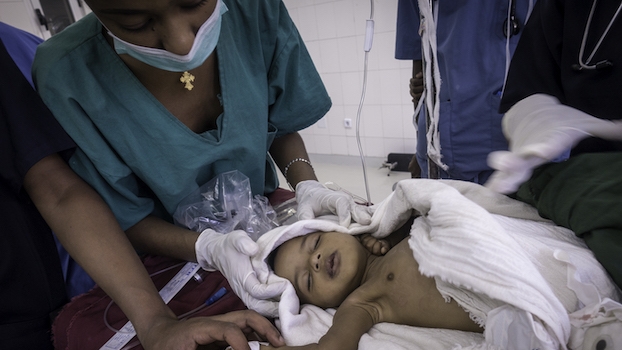Lifebox is dedicated to providing a highly accurate pulse oximeter to clinicians. As part of this effort, we are committed to the continuing evaluation of devices that we distribute. The most recent testing done by the Hypoxia Lab at UCSF in February 2021 reveals that the Lifebox Acare AH-M1 meets the accuracy levels specified by international standards and is highly accurate in an oxygen saturation range of 80-100%; however there is a small change in accuracy below 80% saturation.
We will keep users informed as we work with our manufacturing partner to understand these recent results and address them. While we await final results of testing, Lifebox would like to remind providers that:
1. All pulse oximetry devices have some error – in addition to measured oxygen saturation levels, other clinically relevant information such as perfusion, heart rate, respiratory rate, quality of breathing, and general condition of the patient should inform decisions;
2. Trends in saturation are likely more important than absolute numbers, and wherever possible diagnosis and treatment decisions are best based on trends over time;
3. The accuracy of pulse oximeters may be lower in darker pigmented patients;
4. Pulse oximetry is a critical adjunct to assessing patient condition. Despite variations in accuracy, SpO2 assessment plays an important role in monitoring at-risk patients and providing early identification of clinical deterioration.
Lifebox is sending out this clinical guidance note to all those who have received the Acare AH-M1 pulse oximeter since January 2018. If you have questions about your oximeter, please contact Lifebox at [email protected].
Thank you.
Tom Weiser, MD, MPH, Lifebox Consulting Medical Officer
Kris Torgeson, MPH, Lifebox Global CEO
We offer the following patient scenarios as guidance for use of oximetry in clinical care:
Clinical scenario example 1:
A 6 year old Brazilian boy is being assessed by a community health worker for pneumonia. He has had fevers and a productive cough. The community health worker notes that his respiratory rate is 24 breaths per minute with signs of respiratory distress, a pulse rate of 110, and a saturation of 96% by pulse oximetry.
Action: This child should be referred to a higher level of care given the findings on exam (i.e., signs of respiratory distress) and his vital signs in the danger zone, even though his saturation level is within an acceptable range.
Clinical scenario example 2:
A 53 year old Indian woman is undergoing surgery to remove a breast tumor. Her vital signs and saturations were normal during her preoperative assessment. Her SpO2 at the start of the operation was 99%, but over the last 15 minutes her saturations have dropped to 94%.
Action: The cause of her relative desaturation should be investigated. Even though her saturation level is within an acceptable limit, the dropping saturation over time is concerning.
Clinical scenario example 3:
A healthy 22 year old Ethiopian man has undergone successful emergency surgery for a sigmoid volvulus. In the recovery area immediately following his operation his SpO2 is noted to be 96%. When the nurse next returns to the bedside his SpO2 is noted to be 93%.
Action: The cause of desaturation should be investigated and supplemental oxygen provided. Even though the readings are within the potential margin of error of a pulse oximeter, the trend towards hypoxia in a young, healthy patient who would be expected to have consistently high levels of saturation should raise concerns.



